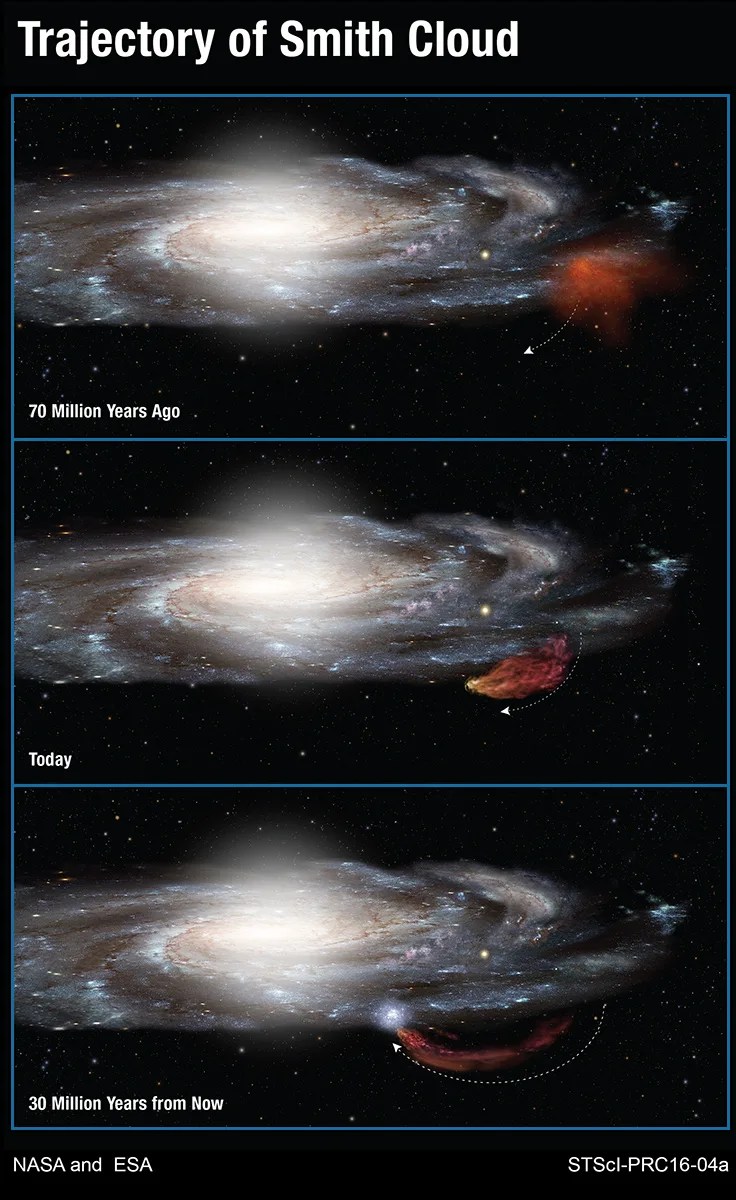
Trajectory of Smith Cloud
This diagram shows the 100-million-year-long trajectory of the Smith Cloud as it arcs out of the plane of our Milky Way galaxy and then returns like a boomerang. Hubble Space Telescope measurements show that the cloud came out of a region near the edge of the galaxy's disk of stars 70 million years ago. The cloud is now stretched into the shape of a comet by gravity and gas pressure. Following a ballistic path, the cloud will fall back into the disk and trigger new star formation 30 million years from now.
Credits: NASA/ESA/A. Feild (STScI)
Image CreditNASA/ESA/A. Feild (STScI)
Size640x1043px
